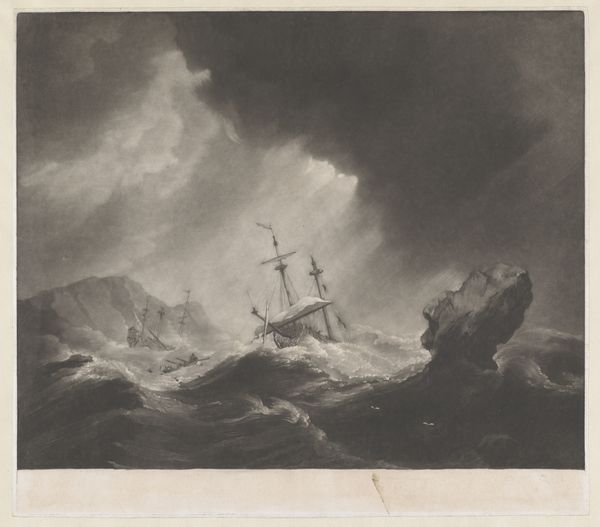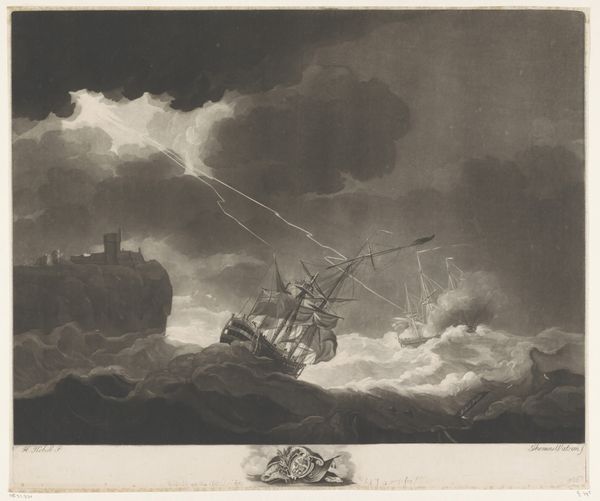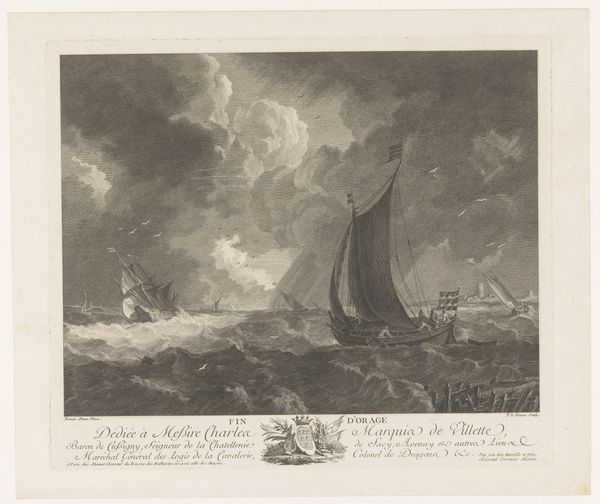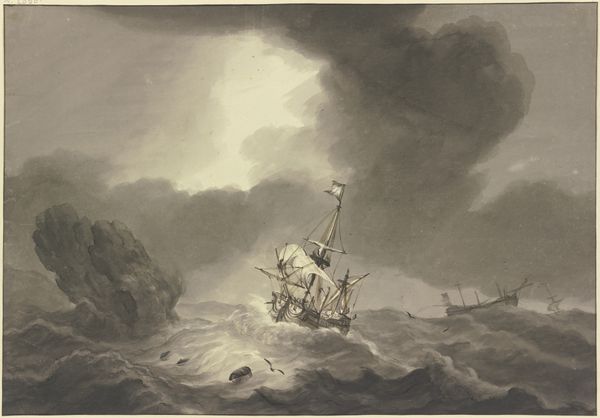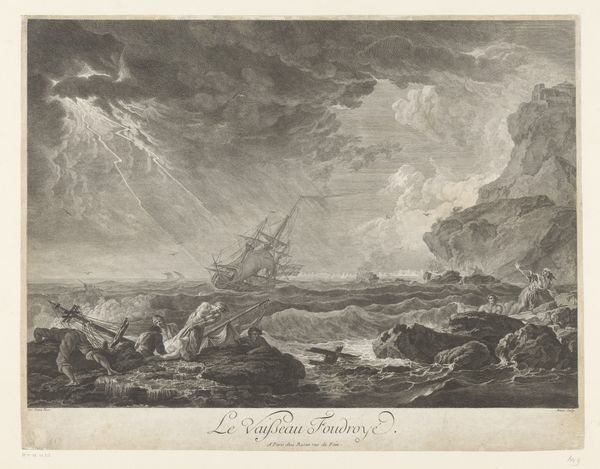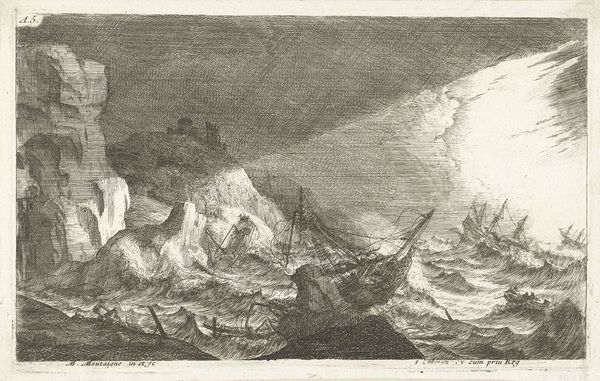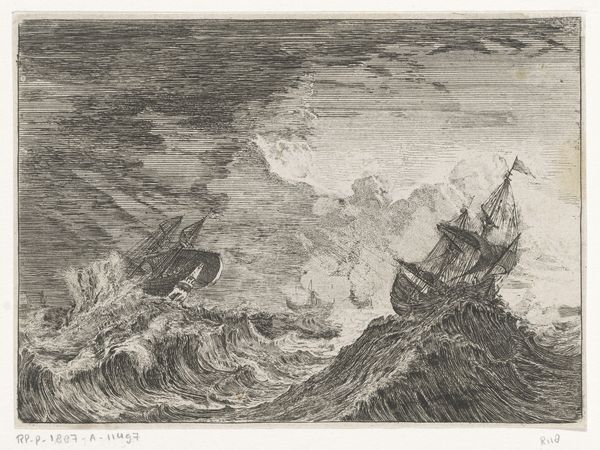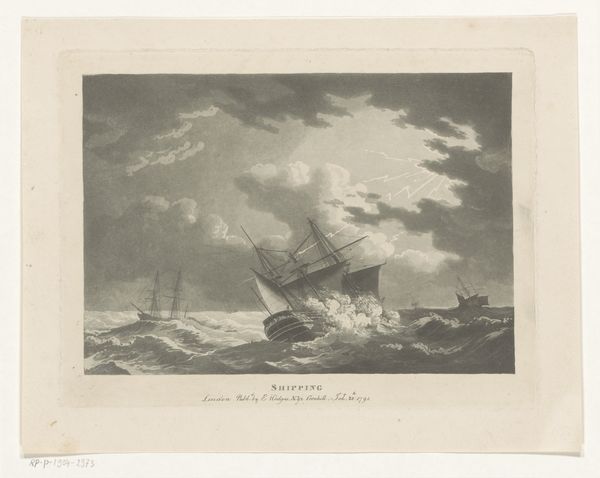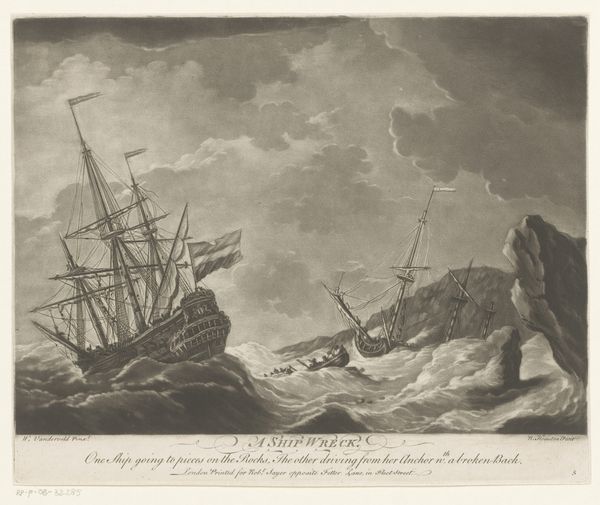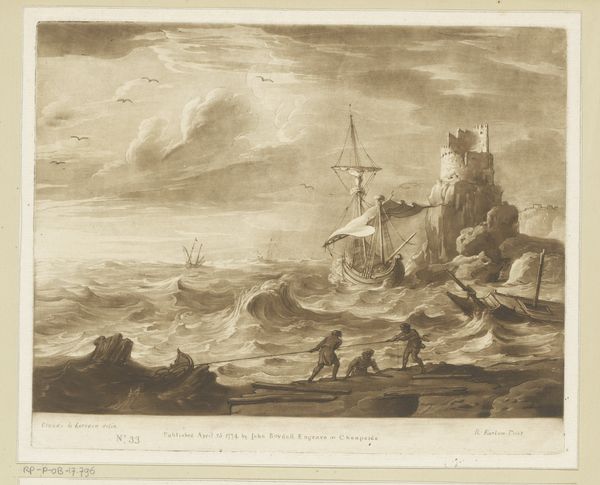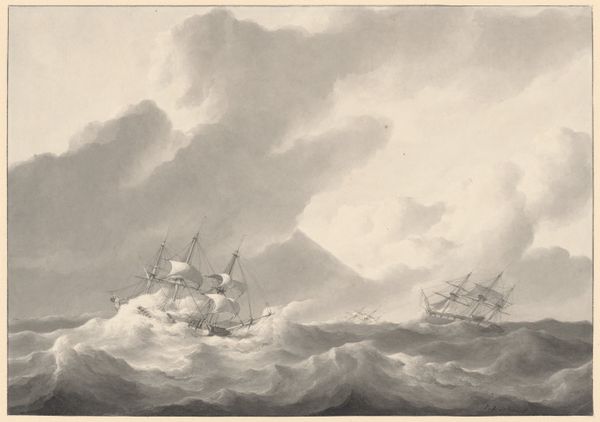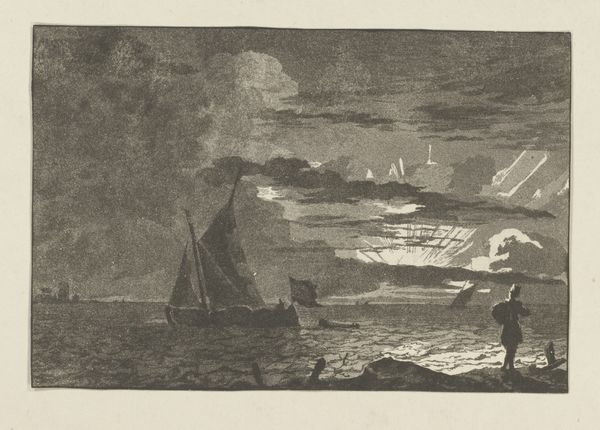
Dimensions: height 456 mm, width 532 mm
Copyright: Rijks Museum: Open Domain
Editor: So, this engraving from 1767, "Drie schepen in een storm op zee nabij rotsen" by James Watson, really grabs your attention with the drama of the stormy sea. The dark clouds and struggling ships create a very intense atmosphere. What do you see in this piece beyond the obvious drama? Curator: The socio-political undercurrents of such a dramatic scene. This piece wasn't simply about depicting nature; it was about man's relationship to it, particularly England's relationship to the sea at the time. The sea was simultaneously a source of national power and wealth and a constant threat. What details point to these dualities for you? Editor: I guess the imposing rocks and stormy sky are nature as a threat? But the ships also suggest trade and exploration. Does that mean images like this played a role in shaping public perceptions of maritime power? Curator: Precisely! Think about it: England’s identity was deeply intertwined with its naval prowess. Images like these romanticized and even celebrated the inherent dangers of maritime life. The "sublime," as it was understood then, wasn't just about beauty but about the awe and terror inspired by nature's power. Who benefitted from distributing such representations and stirring emotions around it? Editor: Okay, so the art isn't just a reflection of life but part of the system that shapes it. Knowing the engraving is at the Rijksmuseum, I wonder if Dutch viewers from that period interpreted it similarly to the English. I never would have thought about the "sublime," but it certainly changes the way I see it! Curator: Exactly! We’ve just scratched the surface but contextualizing this work within its historical and social milieu truly enriches our viewing experience. We've seen how this intense image also functions as political imagery, which brings an additional layer of depth.
Comments
No comments
Be the first to comment and join the conversation on the ultimate creative platform.
